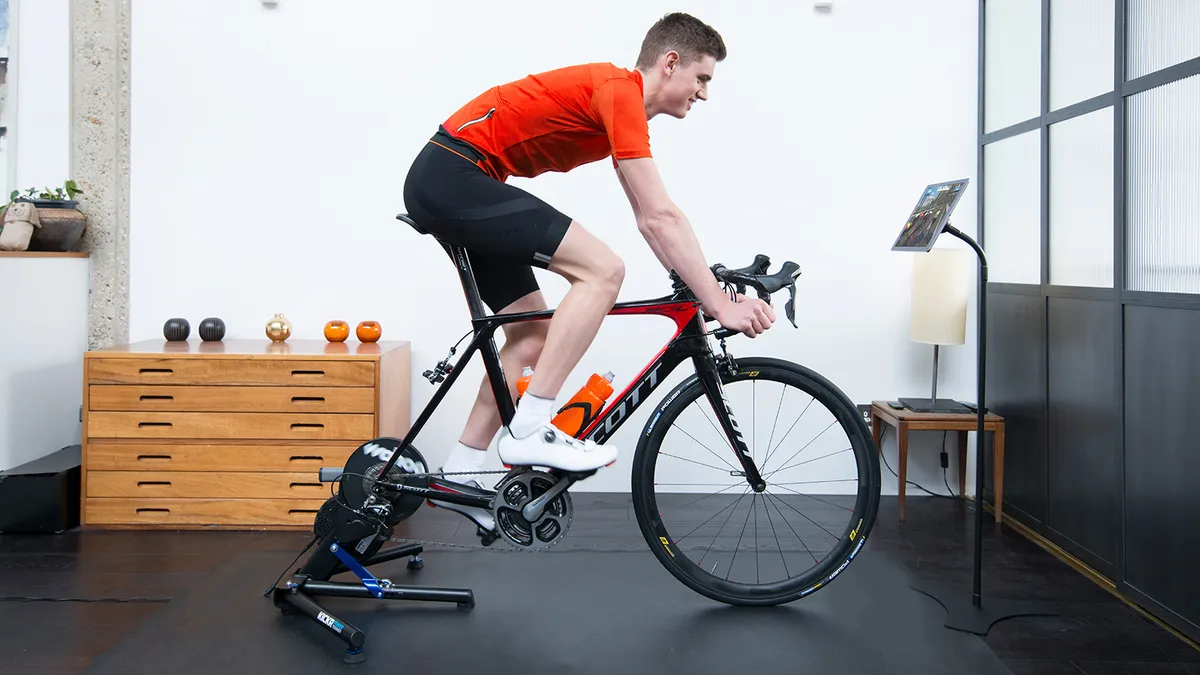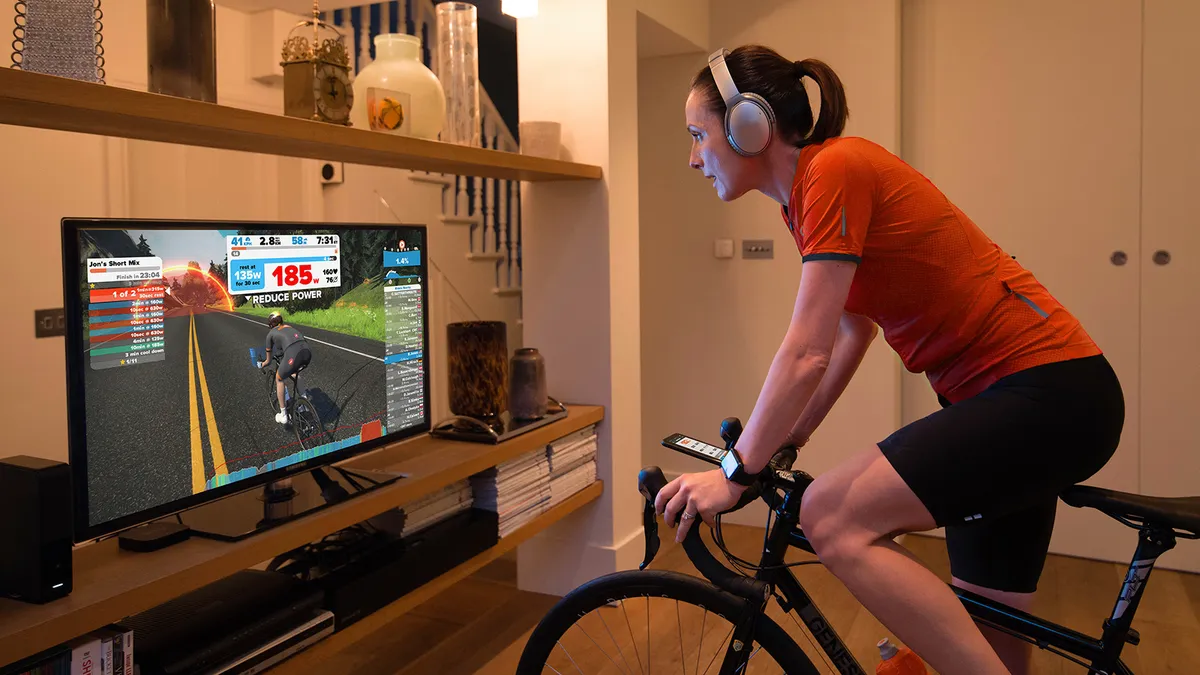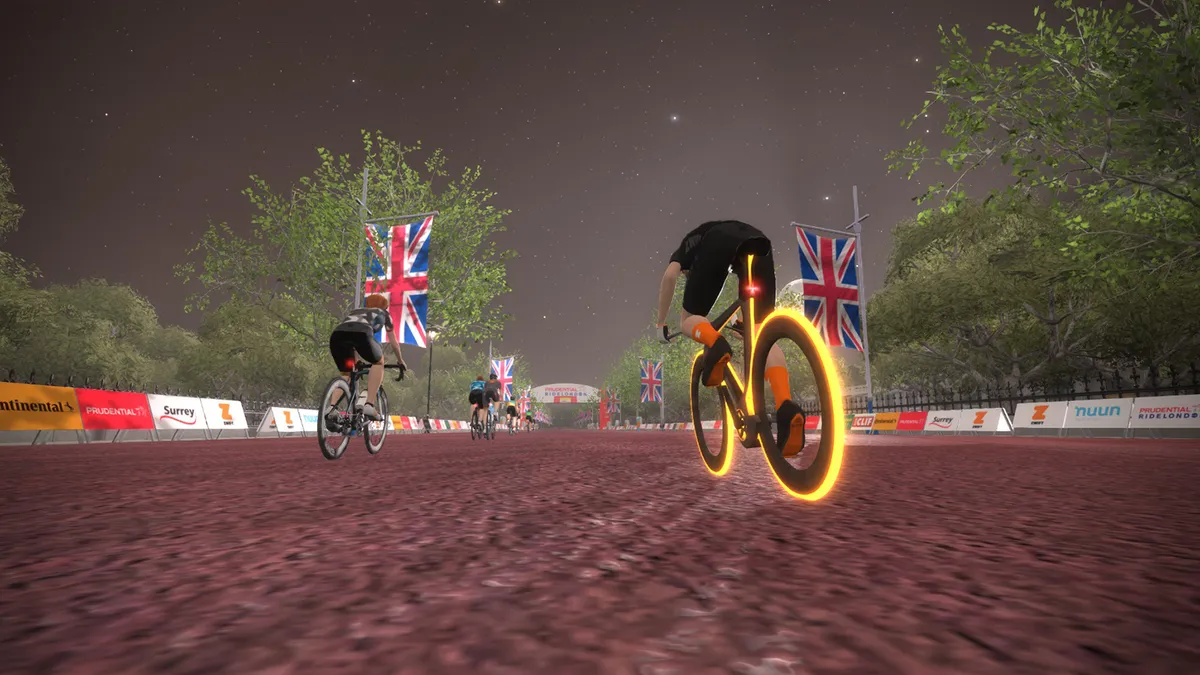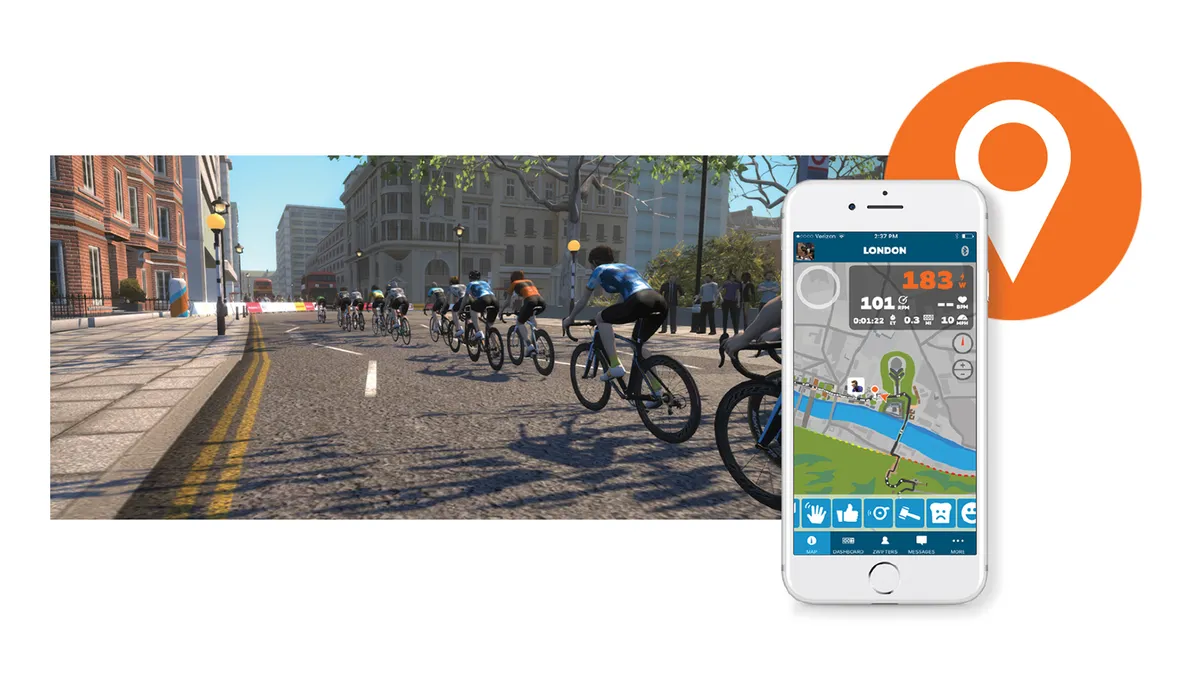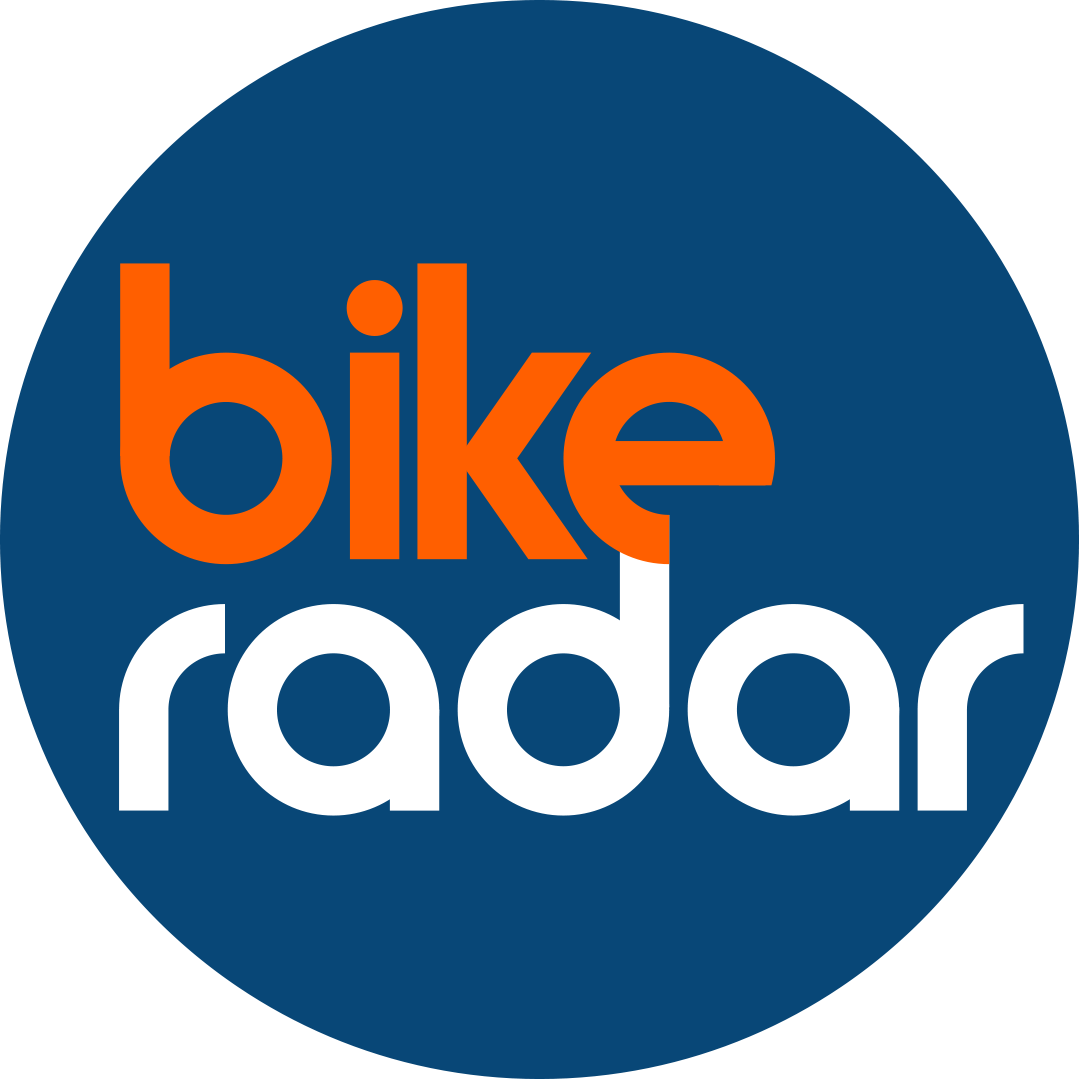This is a sponsored article in association with Zwift.
Maximising time is key to recreational cyclists achieving their two-wheeled ambitions, be it going sub-7hrs at Prudential Ride London or simply completing the notorious beast that is the Fred Whitton Challenge. That’s why you must train smart — and that, ladies and gentlemen, is where Zwift comes in.
Numerous performance metrics, a safe environment and lack of traffic means indoor riding with Zwift dispenses with the junk miles; instead, each and every session can elicit a physiological and performance adaptation. And with work, family and life to balance out your riding, giving your sessions a sharp focus is key to faster riding in 2018. Cue interval training…
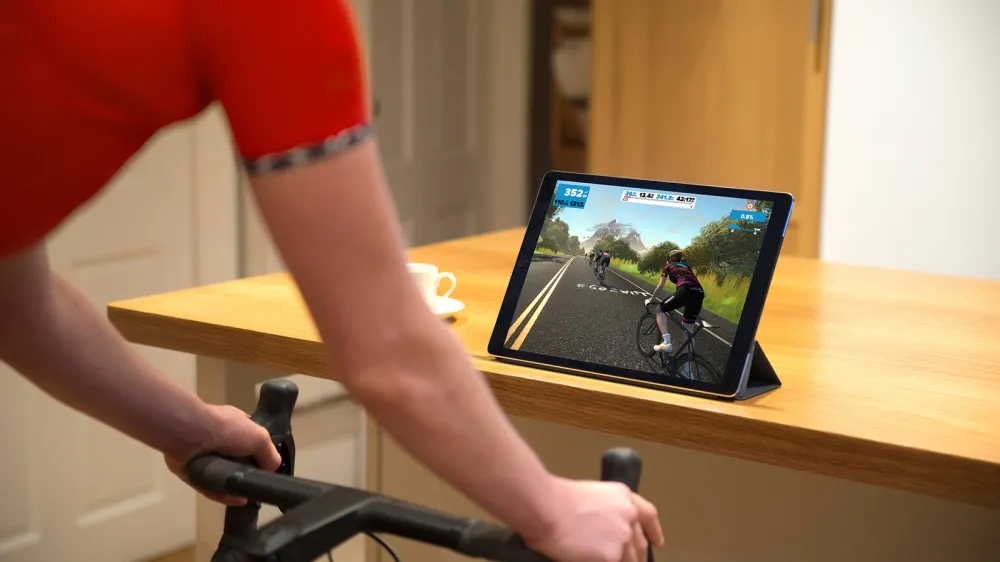
Interval benefits
Cycling for upwards of 100 miles requires an array of physical attributes, beginning with stamina. More precisely, this means a high VO2max.
Your VO2max, or aerobic capacity, is the maximum amount of oxygen you can use and is measured in millilitres per kilogramme of bodyweight per minute (ml/kg/min). The higher yours is, the more oxygen you can process to fuel working muscles. Top pros will measure 80-plus, while good recreational cyclists will be upwards of 55ml/kg/min.
Zwift comes with hundreds of pre-programmed interval sets, though you can also customise your own
Traditionally, it was thought that the only way to raise your VO2max was with long weekly rides. And while those Sunday-morning rides certainly boost endurance, you can also raise your VO2max, as well as speed and power, by shorter, interval sessions.
Interval training requires riding at a high intensity, such as 90 percent of your maximum heart rate or your functional threshold power (FTP), for short periods of time with lower-intensity pedalling in-between.
You can determine your FTP on Zwift with a simple test. You just need a standard turbo trainer or rollers along with a speed/cadence sensor or a smart trainer such as the Wahoo Kickr, a computer, Apple TV or iOS device, a screen and (of course) a bike!
Zwift comes with hundreds of pre-programmed interval sets, though you can also customise your own. Either way, Zwift displays your power output and heart rate on screen so you can easily monitor an interval session like this: cycle hard six times for 30secs at 100 percent FTP with 10secs rest at 55 percent FTP in-between.
You’d precede these all-out efforts with a warm-up of 10mins to ensure you’re physically and mentally ready, and conclude with a suitable cool-down of at least 10mins. That’s just 30mins. Which is all very well, of course but, physiologically, how can you boost stamina and cut weight in such a short time for an event that might see you riding for over four hours?

The (energy) pathway to success
It’s down to the energy continuum. You have three energy systems: two anaerobic (without oxygen) and one aerobic (with oxygen).
The first is your ATP-PC system, which is your immediate energy system and produces enough energy for around 10secs of really hard effort. After that you delve into another anaerobic energy system, which can produce enough energy for around 60–90secs. Anything over that requires oxygen.
You’d think, then, that shorter, intense efforts would solely produce anaerobic changes — seen through a performance lens this means greater speed and power — but that’s not true.
You see, those rest periods result in a drop in heart rate, meaning you tap into — and improve — your aerobic system. Your oxygen uptake and metabolism also remains ‘aerobically’ high during the cool-down, while your fired-up metabolism will continue to burn fat long after the interval session is finished.
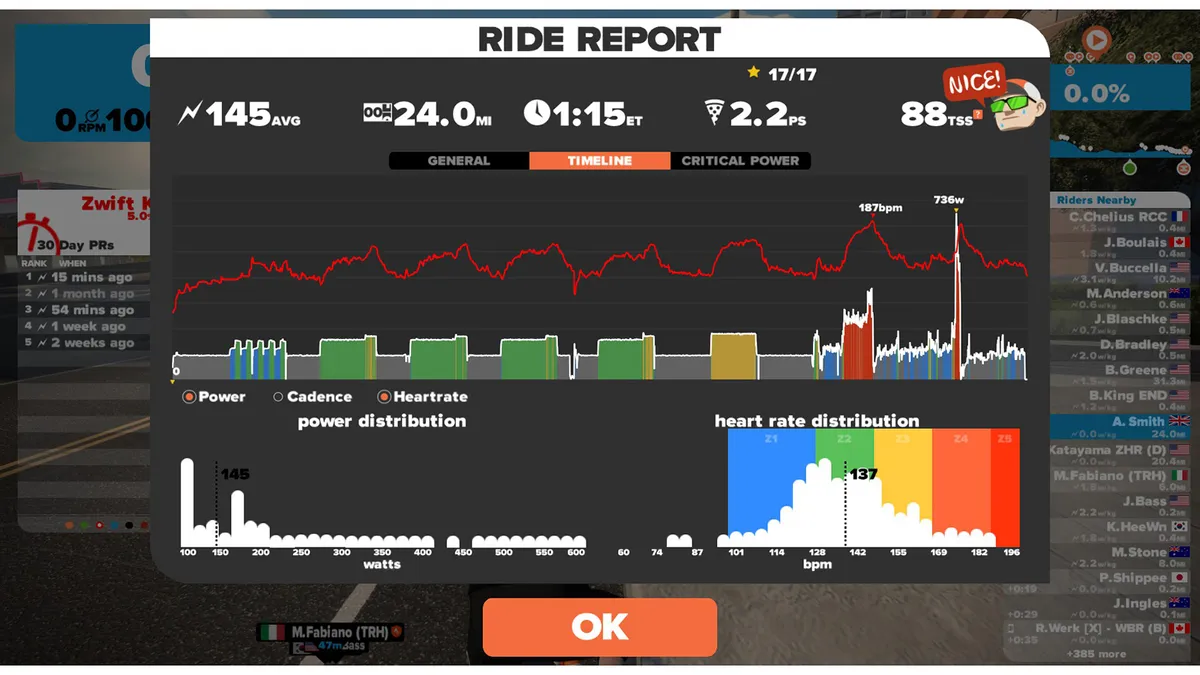
Need convincing? A team of researchers led by Dr Izumi Tabata from the National Institute of Fitness and Sport in Tokyo showed that just four-minute workouts, consisting of repeated 20secs all-out work followed by 10secs rest, undertaken four days a week, resulted in greater aerobic improvements than a moderate-intensity group who worked out for an hour, five days a week, for six weeks. On top of that, the high-intensity group lost 2 percent body fat while the cardio group lost just 0.3 percent.
While you’ll always enjoy riding outdoors with your mates, the ease at which you can control ride intensity on Zwift — and the ease at which you can suddenly transform yourself into the new Chris Froome or Marianne Vos — means your cycling will benefit from riding Zwift all-year round. It’s time to sign up to Zwift and allez, allez, allez…
